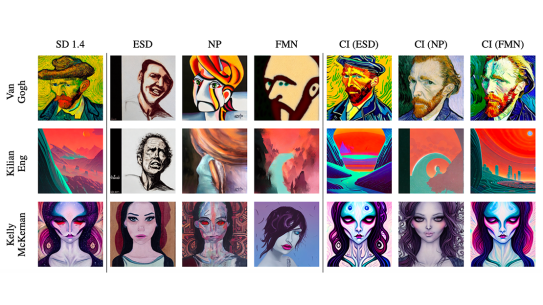Making AI Work: The power and limits of AI
Researchers at NYU Tandon School of Engineering are probing the frontiers of artificial intelligence, revealing both its extraordinary power and sobering limitations. Their work spans from leveraging AI to democratize chip design to advancing image manipulation techniques, offering a comprehensive glimpse into AI’s future.

Chip Chat
In a groundbreaking development, NYU Tandon researchers led by Hammond Pearce, at the time a NYU Tandon research assistant professor, created the world’s first microchip designed through conversations with an AI language model.
The team used OpenAI’s GPT-4 to author the Verilog code, a hardware description language crucial for explaining digital
circuits and systems. The chip, named QTcore-C1, was fabricated by Efabless after winning that company’s AI Generated Open-Source Silicon Design Challenge in June 2023.
Altering age with AI
In the realm of image manipulation, NYU Tandon researchers, led by Associate Professor Chinmay Hegde (CSE, ECE, CCS, VIDA) developed a new AI technique to change a person’s apparent age in images while maintaining their unique identifying features, a step forward for the use of facial recognition software in a range of security settings. Their approach outperformed existing age- modification methods, demonstrating a decrease of up to 44 percent in the rate of incorrect rejections.
These advancements come with cautionary tales, however. Hegde led another project that exposed significant vulnerabilities in methods meant to make text-to- image AI systems safer.

NYU Tandon researchers led by Institute Associate Professor Siddharth Garg (ECE, NYU WIRELESS, CCS, CATT) have also uncovered potential biases in large language models when used to evaluate job candidates’ resumes. While race and gender didn’t trigger biased results, maternity-related employment gaps showed significant bias in some models.
In the field of data security, Assistant Professor Brandon Reagen (ECE, CSE, CCS) is leading research on fully homomorphic encryption (FHE). This advanced cryptographic technique allows users to process encrypted data while it remains encrypted, preserving data privacy throughout the computation process. Reagen and his team are designing specialized hardware accelerators to make FHE practical, promising a new level of data privacy and security.
Your next AI assistant

As augmented reality (AR) assistants become more sophisticated, a team led by Institute Professor and Co-Director of VIDA Claudio Silva (CSE, CUSP, CATT) is developing new ways to assess and fine-tune their performance.
Among the innovations Silva’s teams introduced this year is ARGUS, a visual analytics tool that enables developers to monitor and analyze AR systems in real-time and retrospectively, helping them improve AI-guided task support in various applications.

